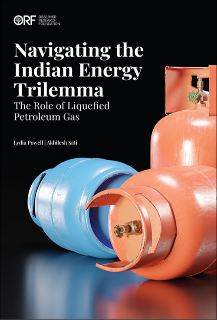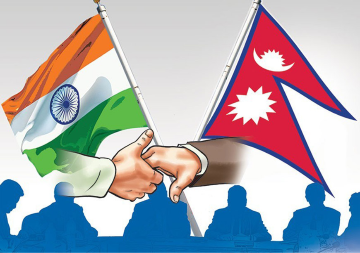Recently, the Special Economic Zones Bill 2005 has been passed by both Houses of Parliament and is awaiting the approval of the President. The purpose of having a separate Bill on Special Economic Zones (SEZs) is to clarify all policy initiatives relating to such special zones so that many more foreign and domestic investors can establish their units in these areas. There are 11 functioning SEZs in the country already and they are producing 5 percent of India's total exports. Yet it has been felt (by exporting firms mostly) that there are certain areas that need attention in order to make India's SEZs as attractive as those located in China. With better and clear cut incentives, the government hopes to attract $2 billion more in foreign direct investment.
Most countries in South Asia-Nepal, Bangladesh, Sri Lanka and Pakistan have all tried to promote their exports and also create employment by establishing these special economic zones. Since all are highly populous countries, they are heavily into exports of goods requiring cheap labour. In fact they are all competing with each other in almost the same products-garments, sports goods, knitted garments, textiles, gems and jewellery. Bangladesh and Sri Lanka have really done well in garment exports and 90 per cent of the workers in Bangladesh's garment sector, are women.
Basically, all the countries in South Asia have been able to cut costs by locating their industries in these special zones where many tax concessions and holidays are available. In these special economic zones, a different set of laws are applicable and a smooth and well functioning infrastructure is specially created to meet the needs of different exporting units. Other attractive incentives for repatriation of profits have also been given to invite foreign investment. A regular supply of power and water as well as regular supply of labour through an efficient transportation system to the factories has been ensured to all the units in these special zones.
India's special economic zones are scattered around the country from Surat, to Kochi to Noida near Delhi. But they have not been as successful as those in some of the neighbouring countries and specially those in China. The SEZ Bill will clarify various policies relating to income tax concessions and there would be a single window clearance and fast track approval for all future project proposals. These special zones will be treated as though they are foreign territories within India. The SEZ units and developers will get 100 per cent exemption from income tax for 5 years and 50 per cent of their ploughed back profits will also be exempted from tax for five years. They will also be exempted from customs and central excise duties for five years
There will be quick disposal of trials and disputes which will make foreign firms happy because they can exit quickly if they wish.. Hopefully, foreign investors will set up manufacturing plants in these special zones and take advantage of the facilities that are equivalent to those prevalent in the export zones in neighbouring countries. India's export growth which is already on an upswing can get a further boost if the main problems of infrastructure and supply of labour are solved in these zones. However, the labour laws of the country will prevail as before, in these zones. But since most employment is on contract basis, the labour laws will not be enforced and would be circumvented.
As in other countries, where such zones attract a lot of women workers India too has many women workers in the SEZs and in future too, more women are likely to be employed in them. Women workers usually earn salaries that they would not be able to earn outside the zone and also, the difference between men and women workers' wage is not too different.
Multinational corporations have typically set up their factories in these special zones in most of South Asian countries and they employ thousands of women but their work is mostly repetitive in nature like knitting, sewing or fixing small parts. As a result, women often suffer from chronic illnesses because of the monotony and repetitive nature of their jobs and the highly restricted spaces in which they are confined to during work hours. They suffer from various problems related to night shifts and close monitoring by tyrannical supervisors. They are also not given proper contracts and are hired and fired easily. No health benefits are usually given to women workers and with marriage or pregnancy, their contracts are often terminated. But some argue that if the women did not work in these factories, they would have no income at all which would push them back into poverty and oppressive home situation.
The special zones indeed do provide jobs to women from the neighbouring towns but they have to be given more job security and health insurance to maintain the quality of the labour force. What is also required is proper training and skill upgradation so that there is scope for promotion and improvement in job profiles for women over time. Otherwise, women of a certain age will keep getting hired and fired and remain on the fringe of all industrial activity and keep getting short term employment only.
There is another danger in having too many of these economic zones because India is inviting multinational companies on terms that are on par with those existing in all our neighbouring countries. China has by far the most attractive terms and conditions. In this intense competition, there has been a tendency for the multinational companies to keep changing their locations whenever they see a slight cost advantage. This can result in sudden closure of factories and resulting unemployment. Some of these workers often go back to their homes and supply goods to agents who are working on behalf of multinationals. Such outsourcing from very poorly paid workers by big firms located outside the SEZs is not uncommon India and in many of the other South Asian countries. Since only 50,000 additional jobs can be created in these Special zones as compared to the big monetary and fiscal concessions given to them, the best course would be to have a few really well functioning special economic zones that are properly and efficiently run without undue exploitation of women workers.
The author is Senior Fellow, Institute of Economy and Development, Observer Research Foundation.
* Views expressed in this article are those of the author and do not necessarily reflect those of Observer Research Foundation.
The views expressed above belong to the author(s). ORF research and analyses now available on Telegram! Click here to access our curated content — blogs, longforms and interviews.




 PREV
PREV

